Q
How Heavy Does Perodua Axia Weight? Check Here to Know
The weight of the Perodua Axia varies depending on the model and configuration. According to official data, its kerb weight is approximately between 815 kg and 865 kg, which specifically depends on the model version (such as the standard version, SE or AV) and whether it is equipped with additional features like alloy wheels or body kits. As one of the most popular entry - level economy cars in Malaysia, the Axia's lightweight design helps to improve fuel efficiency, making it highly suitable for city commuting. Moreover, its body structure also meets safety standards. Knowing the vehicle's weight is very helpful for drivers. For example, this data is needed when calculating the load capacity, toll fees or choosing tires. Additionally, the vehicle's weight also affects handling and fuel consumption. A lighter body usually provides a more flexible driving experience and lower fuel consumption. However, it's important to pay attention to the stability when driving at high speeds. If you're considering buying an Axia, it is recommended that you visit a Perodua showroom and take a test drive to experience its actual driving performance. You can also consult the sales staff to get more detailed vehicle specification information.
Special Disclaimer: This content is published by users and does not represent the views or position of PCauto.
Related Q&A
Q
What Segment is Perodua Axia?
The Perodua Axia belongs to the A-Segment vehicles in the Malaysian market, which is the most entry-level microcar category. It mainly targets consumers with limited budgets who prioritize fuel economy. Its body size is compact (about 3,640mm in total length and a wheelbase of 2,450mm). It is equipped with a 1.0L three-cylinder engine and paired with a D-CVT gearbox, highlighting the flexibility for urban commuting and the advantage of low cost. The official fuel consumption data shows that it can travel about 22 kilometers per liter of gasoline, meeting the needs of Malaysian consumers for economical and practical small cars.
In terms of extended knowledge, Malaysia's automobile classification standards usually refer to the European system. Besides the Axia, A-Segment models also include the Proton Saga and other vehicles. These cars are characterized by their affordable prices (the starting price of the Axia is around RM22,000 to RM49,000) and are suitable for narrow road environments. However, their safety configurations have been significantly improved in recent years. For example, all models of the 2023 new Axia come standard with ABS + EBD and dual airbags, and the top - end version is even equipped with the ASA 3.0 advanced safety assistance system, indicating that entry - level car models are gradually upgrading their technological equipment. Consumers can choose different configuration versions according to their budgets. At the same time, it is recommended to test - drive and compare the Proton Iriz in the same class or second - hand B - Segment models before purchasing a car to comprehensively evaluate the balance between space and functionality.
Q
What is the Reslae Value of Perodua Axia?
As one of the best-selling entry-level models in Malaysia, the Perodua Axia shows relatively stable resale value in the used car market. This is mainly due to advantages such as the high vehicle ownership of the brand, low maintenance costs, and good fuel economy. Depending on factors like vehicle age, mileage, vehicle condition, and configuration, Axias that are one to three years old usually retain 60% to 75% of their original price, while those that are five years old are around 40% to 50%. The specific price also needs to refer to market supply and demand and maintenance records. In addition, the durability of the Axia and its extensive service network also support its resale value.
For consumers considering buying a used Axia, it is recommended to give priority to models with complete original factory maintenance records to ensure the vehicle condition. At the same time, pay attention to the configuration differences of minor facelifts in different years. For example, models after 2022 have upgraded safety features, and such updates may have a positive impact on the resale price. In the Malaysian used car market, economical small cars like the Axia usually have a fast turnover rate and are a practical choice for car buyers with limited budgets.
Q
How Many CC is Perodua Axia?
The Perodua Axia is one of the most popular entry - level compact cars in Malaysia. The engine displacement varies across different versions. Currently, the latest model of the Axia is equipped with a 1.0 - liter three - cylinder naturally aspirated engine, with a specific displacement of 998cc. This is a common engine configuration for compact economy cars. This engine emphasizes fuel efficiency and is highly suitable for city commuting and daily use.
For Malaysian consumers, the low displacement of the Axia not only means lower fuel consumption and road tax but also meets the domestic demand for economical and practical vehicles. It's worth noting that engine displacement (CC) doesn't directly determine a vehicle's power performance. Other factors such as horsepower, torque, and gearbox tuning also need to be comprehensively considered. Although the Axia has a relatively small displacement, its lightweight body design and optimized transmission system ensure sufficient power for daily driving.
Moreover, the Malaysian market is quite sensitive to the displacement of compact cars. Therefore, engines around 1.0 liters are very common locally. They can balance performance and cost and are also suitable for the local road conditions and fuel price environment.
Q
What is the Engine in Perodua Axia?
The Perodua Axia is a highly popular economy car in the Malaysian market. It is equipped with a 1.0-liter three-cylinder naturally aspirated engine, model number 1KR-DE. This engine was jointly developed by Perodua and Toyota of Japan. It adopts the double overhead camshaft (DOHC) and variable valve timing (VVT-i) technologies. The maximum power is 67 horsepower and the maximum torque is 91 Nm. It is paired with a 4-speed automatic transmission or a 5-speed manual transmission. The overall performance is smooth and it boasts excellent fuel economy, making it very suitable for urban commuting.
The design of this engine focuses on low fuel consumption and low emissions, meeting the environmental protection requirements of the Malaysian market. At the same time, it also reduces the daily usage cost for car owners. For readers who want to learn more about automotive knowledge, although three-cylinder engines may be slightly inferior to four-cylinder engines in terms of smoothness, their lightweight and high - efficiency features make them very popular in small - displacement models. The addition of VVT - i technology further optimizes power output and fuel efficiency, which are common technological trends in modern small - displacement engines.
Q
What is the Gearbox Type of Perodua Axia?
The transmission types of the Perodua Axia include manual transmission (MT) and continuously variable transmission (CVT). The 2023 Perodua Axia E 1.0 MT is equipped with an MT transmission, offering more direct gear - shifting control for drivers who prefer the manual handling feel and bringing a more engaging driving experience. On the other hand, models like the 2023 Perodua Axia 1.0 G, 1.0 X, 1.0 SE, and 1.0 AV are equipped with a CVT transmission. Its smooth gear changes can provide a more comfortable driving and riding experience and help improve fuel economy under specific operating conditions. The diverse transmission configurations fully meet the personalized needs of different consumers.
Q
What is the PCD Size of Perodua Axia?
The PCD (Pitch Circle Diameter) of the Perodua Axia is 100mm, which means its wheel hub bolt holes are distributed on a circle with a diameter of 100mm. Usually, it is fixed with 4 bolts. This specification is quite common among small cars in the Malaysian market. For example, models like the Proton Saga also use the same PCD size. Understanding the PCD size is very important for car owners when replacing wheels or upgrading tires. You must ensure that the PCD of the new wheels is the same as that of the original vehicle; otherwise, it may lead to installation mismatches or potential safety hazards when driving.
In addition to PCD, when replacing wheels, you also need to pay attention to the center bore diameter (CB) and the offset value (ET). These parameters together determine whether the wheels are suitable for the vehicle. If you plan to modify the wheels of your Axia, it is recommended to choose certified products and consult professional technicians to ensure compatibility and safety. At the same time, after modification, you also need to comply with the regulations of the Malaysian JPJ to avoid affecting the vehicle's annual inspection or insurance rights.
Q
Does Perodua Axia Have Apple Carplay?
Currently, the Perodua Axia doesn't come standard with Apple CarPlay. As one of the most popular entry - level models in the Malaysian market, the Axia focuses more on practicality and economy. Its infotainment system mainly offers basic functions such as Bluetooth connection, USB playback, and radio. If users want Apple CarPlay, they can consider installing a compatible central control system through third - party modification shops. However, it should be noted that this may affect the original factory warranty.
Apple CarPlay is an intelligent connectivity technology that projects the iPhone interface onto the in - car system, enabling convenient operations for functions like navigation, music, and calls. In recent years, many new cars have made it a standard feature. For example, the Proton Saga in the same class provides this function in some high - end versions. Nevertheless, the Axia remains a popular choice for city commuting thanks to its excellent fuel economy and low maintenance costs. It is recommended to weigh the priorities between technological features and practicality based on your own needs before buying a car.
Q
What is the Tyre Brand of Perodua Axia?
As one of the most popular entry - level models in the Malaysian market, the original - equipped tire brands of the Perodua Axia vary according to different years and vehicle versions. The common configurations include tires from the Silverstone brand, widely used in the local market. For example, there are cost - effective and durable tires like the Silverstone Kruizer NS800 or Synergy M5. These tires are specifically designed for the Southeast Asian climate, emphasizing wet - grip and wear resistance.
Some high - end versions may also use entry - level products from other international brands such as Bridgestone or Goodyear to enhance comfort and noise reduction. The tire specifications are usually 165/55 R14 or 165/60 R14, which meet the energy - saving requirements for urban commuting.
It is recommended that car owners regularly check the tire pressure and tread depth. In Malaysia's rainy climate, it's crucial to ensure the tires have good drainage performance. If replacement is needed, you can refer to the original factory specifications or consult a certified repair center. When upgrading, you can also consider energy - saving tires from brands like Michelin or Continental to further reduce fuel consumption. However, be aware that the handling characteristics of different brands of tires may affect your driving experience.
Q
Is Perodua Axia a Good Car? Learn the Pros and Cons Here
As one of the best-selling entry-level models in Malaysia, the Perodua Axia is indeed an economical small car suitable for urban commuting. Its advantage lies in excellent fuel economy. Official data shows that the 1.0L engine paired with a D-CVT transmission can achieve a range of over 18 kilometers per liter, making it very suitable for young families on a budget or first-time car buyers. Meanwhile, its compact body makes it easy to navigate through crowded city areas. The standard dual airbags, ABS, and ISOFIX child seat anchors also meet basic safety requirements. Low maintenance costs and an ample supply of parts are also its notable advantages.
Of course, this car also has some limitations. For example, the engine noise is quite obvious when driving at high speeds, the rear space is a bit cramped for adults, and the entry-level E model is not equipped with an ESC stability control system. If you often drive long distances, you may need to consider a higher - specification version.
It's worth noting that the Axia received a three - star rating from ASEAN NCAP in 2023. It's recommended to test - drive and compare with its counterparts like the Proton Saga or Bezza according to your actual needs before buying a car. At the same time, you can pay attention to the promotional offers regularly launched on the Perodua official website, such as free maintenance packages or low - interest loans. These can further enhance the cost - effectiveness of car ownership.
Q
What is the Width of Perodua Axia?
The width of the Perodua Axia varies depending on the model and generation. For the 2018 - 2019 models, such as the Standard E, Standard G, SE, and Advance, the width is 1,620 millimeters, while the 2019 Axia Style 1.0 AT has a width of 1,625 millimeters. In the 2023 models, the Axia E 1.0 MT has a width of 1,620 millimeters, and the Axia 1.0 G, 1.0 X, 1.0 SE, and 1.0 AV reach a width of 1,665 millimeters. The body width is an important parameter that directly affects the vehicle's handling, its ability to pass through narrow spaces, and the interior space of the passenger compartment and luggage compartment.
Latest Q&A
Q
Toyota Hiace how many seats
The Toyota Hiace is a staple in Malaysia's commercial and family vehicle scene, with seating options that vary by trim. The standard models, like the Hiace Van, typically offer 12 to 15 seats—perfect for commercial shuttle services or group outings. On the flip side, the more upscale variants such as the Hiace Super Grandia trim down to 9 to 11 seats, prioritizing comfort with premium upholstery and rear air-conditioning, ideal for family trips or business reception. It is worth noting that some aftermarket shops also offer custom seating configurations, such as adjusting to 13 seats or reducing to 8 seats to flexibly adapt to different uses. For Malaysian buyers, the Hiace's biggest draws are its legendary durability, high ground clearance that handles local road conditions like a champ, and wallet-friendly maintenance costs. The diesel engine variants, in particular, stand out for their impressive fuel efficiency. For the most accurate specs, though, your best bet is to hit up a Toyota Malaysia authorized dealer. They can walk you through the latest model year details, including safety features like ABS and dual airbags—stuff that could definitely sway your final purchase call.
Q
How many models does Toyota Hiace have
The Toyota Hiace is a total workhorse and family favorite here in Malaysia, killing it in both commercial and personal use. You’ll mainly find a few go-to variants cruising our roads: the standard Hiace Van, the Hiace Commuter (that’s the people-hauler), and the top-dog Hiace Super Grandia (the luxury liner). These aren’t just badge swaps—they’re built for different jobs. The Hiace Van? It’s all about getting cargo from A to B, no frills, just space. But the Commuter and Super Grandia? They’re where comfort takes the wheel, packing nicer seats, better air-con, and all that extra kit to keep passengers happy.
Under the hood, Toyota’s got you covered with diesel and petrol engine options, so whether you’re after torque for heavy loads or something smoother for daily drives, there’s a Hiace for that. Malaysians swear by this van for a reason—its legendary durability and rock-solid resale value are huge wins. Plus, that cavernous interior and flexible seating? Perfect for everything from running a business to shuttling the whole family (and then some).
If you’re thinking of adding a Hiace to your fleet or driveway, do yourself a favor: figure out what you’ll *really* use it for, then hit up your nearest authorized dealer for a test drive. Trust me, you’ve gotta feel that space and drive to get the full picture.
Q
Mitsubishi Xpander made in which country
The Mitsubishi Xpander is a multi-purpose vehicle (MPV) primarily built in Indonesia, rolling off the lines at Mitsubishi Motors' local plant there. Since its launch back in 2017, this people-mover has struck a chord in Southeast Asian markets – Malaysia included – thanks to its roomy interior and all-around practicality.
The Xpander's design does a neat job balancing the agility needed for city hops with the space requirements of family getaways. Under the hood, you'll find a 1.5-liter MIVEC engine, which delivers smooth power and decent fuel efficiency – perfect for Malaysia's varied road conditions, whether you're navigating city streets or hitting the highway.
What really makes it stand out for Malaysian families, though, are those thoughtful touches: the generous ground clearance that handles those unexpected potholes, and the super flexible seating arrangements that let you juggle passengers and cargo with ease. Being purpose-built for Southeast Asia, the Xpander nails the local adaptations. Think a robust air conditioning system that laughs at our tropical heat, and interior materials that can take the daily grind – little wonder it's a top pick among Malaysian buyers.
If the Xpander has piqued your interest, swing by your nearest Mitsubishi dealership for a test drive. There's no better way to get a feel for how it drives and just how practical it really is.
Q
how many seater is Mitsubishi Xpander
The Mitsubishi Xpander has carved out a solid following in Malaysia's MPV scene, and it's easy to see why. This 7-seater is a hit with families, thanks to its roomy interior and smartly designed, flexible seating. The 2+3+2 layout works well – the second row slides back and forth to free up legroom, while the third row is perfect for kids or adults on shorter trips. Need more cargo space? Just fold those rear seats down, and you've got plenty of room for whatever you're hauling.
Under the hood, there's a 1.5-liter MIVEC naturally aspirated engine, paired with either a 4-speed auto or 5-speed manual gearbox. It's not about speed here; it's about that smooth, easy drive for daily use and keeping fuel costs in check – exactly what family buyers want.
Practical touches don't stop there. You get handy features like a multifunction steering wheel, a touchscreen infotainment system, and a reverse camera, all of which make life behind the wheel that bit easier.
What really makes the Xpander stand out in Malaysia, though, is its whole package. It's priced reasonably, Mitsubishi's known for building reliable cars, and their after-sales network here is pretty extensive. If you're a consumer who prioritizes space and getting good value for your money, this is a solid pick in the practical family MPV segment.
Q
how much is the Mitsubishi Xpander
The Mitsubishi Xpander's pricing in Malaysia varies depending on the trim level and specifications. The entry-level Xpander Standard starts at approximately RM92,890, while the higher-spec Xpander Premium comes in at around RM99,890. Actual prices may fluctuate based on dealer promotions or optional extras selected. This 7-seater MPV has struck a chord with local families thanks to its spacious interior, practicality, and strong value for money. Under the hood, you'll find a 1.5L MIVEC naturally aspirated engine churning out 105PS and 141Nm, paired with a 4-speed automatic transmission. Fuel efficiency is rated at around 6.6L/100km. Convenience features include LED daytime running lights and power-folding side mirrors.
Notably, the Xpander boasts a generous 205mm of ground clearance, making it better suited than your average MPV for those rougher patches of road you might encounter around Malaysia. Its "Dynamic Shield" family face also gives it a distinct and recognizable look on the road. When considering rivals in the same segment, the Toyota Avanza or Honda BR-V might come to mind, but the Xpander holds an edge in terms of third-row space and cargo-carrying versatility. It's always a good idea to head down to an authorized showroom for a test drive to get a real feel for how it handles, and to check out the latest promotions – things like low-interest financing or complimentary service packages could sweeten the deal.
View MoreRelated News

Perodua Axia Hits 790,000 Sales: What Makes It So Popular?
AshleyAug 12, 2025
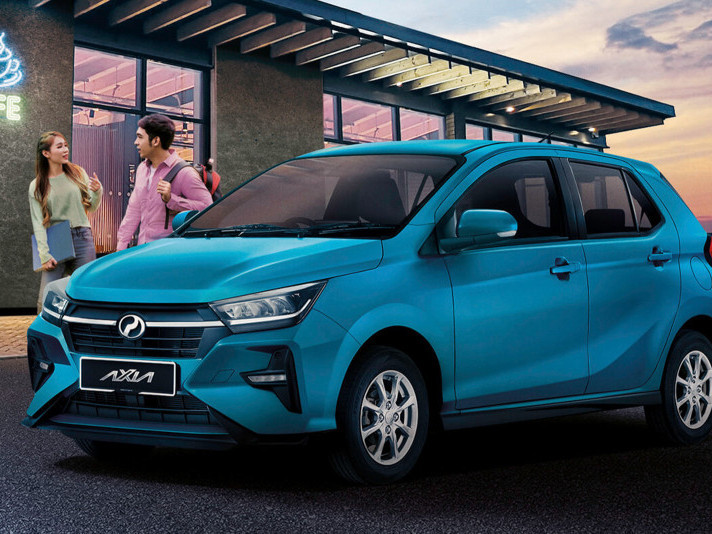
How Much is the Perodua Axia and How to Get the Best Price for Your Desired Model
WilliamMar 25, 2025
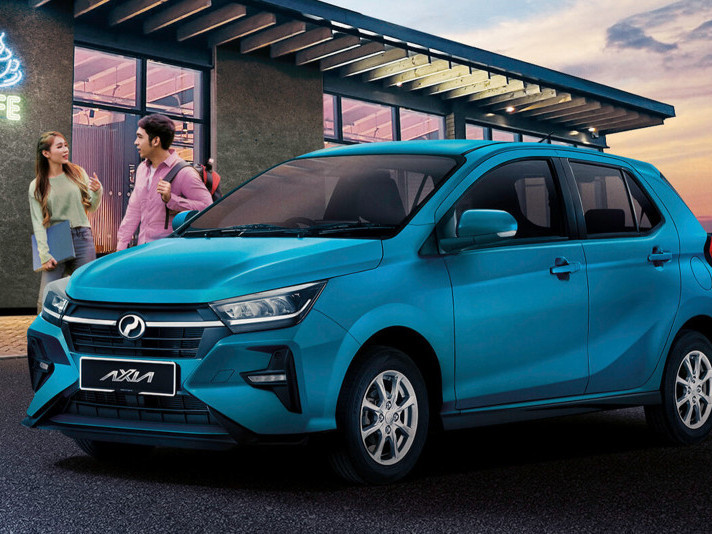
Perodua Axia’s Monthly Payments and Loan Calculation in Malaysia
WilliamMar 21, 2025
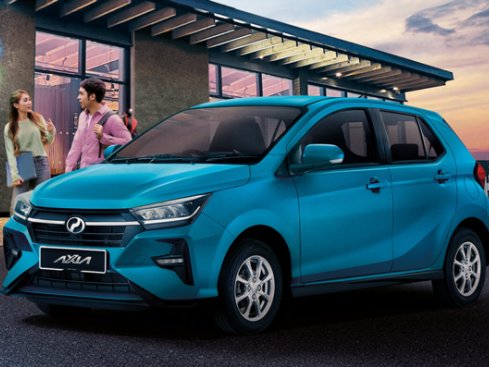
The 2023 Perodua Axia is priced from RM 22,000, with the 1.0 E MT offering the highest cost-performance ratio?
LienJun 11, 2024
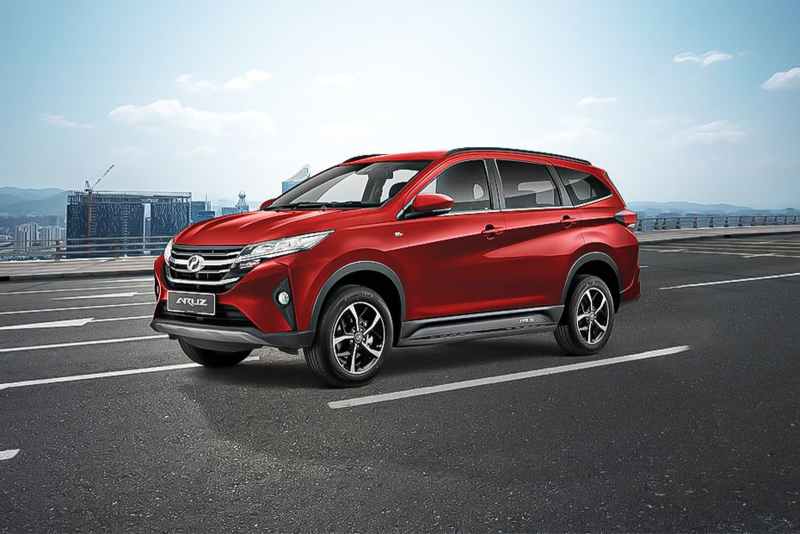
Perodua Aruz Review: A Practical and Safe SUV That Won’t Break the Bank
JamesJul 25, 2025
View More





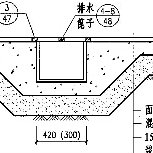




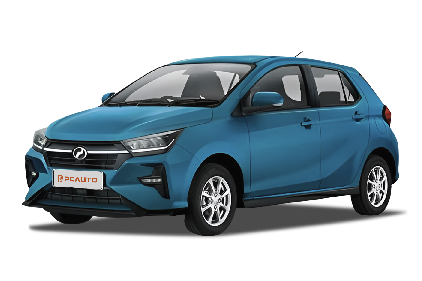





Pros
Cons